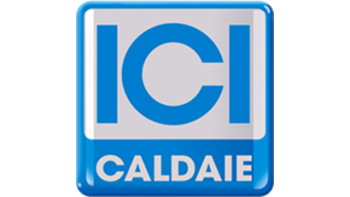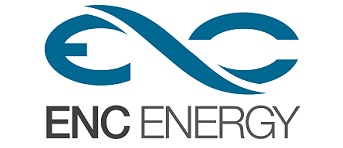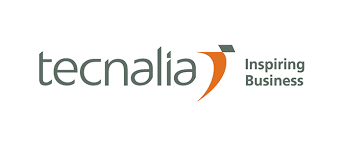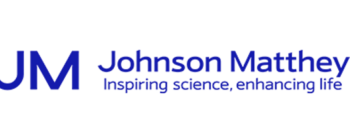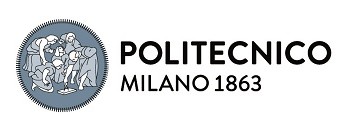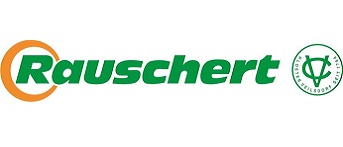In this section you can find uploaded the publishable summary of the private deliverables.
FIRST YEAR
D2.1 Industrial Specifications for a catalytic membrane reactor to produce hydrogen from biogas (PRIVATE)
The state of the art of biogas conversion systems to hydrogen has been reviewed identifying the main process parameters, balance of plant components, raw material specifications and present constraints of the technology. Conventional processes have been compared with the new approach based on a novel reactor configuration proposed in BIONICO project, where the production and separation of hydrogen are integrated on a single vessel. Moreover, the market of the hydrogen produced from biogas has been analysed for the definition of the hydrogen requirements from the point of view of the final application, especially in terms of purity and pressure.
D2.3 BIONICO pre-commercial scale plant report (PRIVATE)
Potential market applications for membrane reactor technology has been evaluated and described in terms of possible biogas producers and possible final consumers of the hydrogen produced, considering a hydrogen production target within 50 – 250 kg/day. The potential markets identified consider different industrial applications like glass production, metal processing, electronic industry, food industry and hydrogen fuelling stations. Among these applications, a small hydrogen fuelling station (80 kg/day) has been selected as potential application of Bionico project.
A preliminary configuration of the system to produce hydrogen from biogas with catalytic membrane reactor technology has been defined including plant specifications, general considerations for the design (location, onsite conditions, raw material specifications, noise limitations) and a preliminary process design.
D3.1 Catalyst according to the formulation developed in FERRET (PRIVATE)A preliminary configuration of the system to produce hydrogen from biogas with catalytic membrane reactor technology has been defined including plant specifications, general considerations for the design (location, onsite conditions, raw material specifications, noise limitations) and a preliminary process design.
Catalyst has been prepared using the method from the previous FCH-JU project FERRET and has been dispatched to TUE.
D3.2 First batch of catalysts (PRIVATE)
Catalyst has been prepared to the specification of the most active BIONICO material on a scalable support material. This has been dispatched to TUE.
D3.4 Preliminary catalyst development report (PRIVATE)
This work package is focused on the development of a fluidizable autothermal reforming catalyst that can achieve the necessary activity to allow the BIONICO system to produce the target of 100 kg/day of hydrogen. The noble metal catalyst development activities have focussed on improving the catalyst formulation with the optimization of dopants and support
D4.1 Conventional supports from DEMCAMER: porous tubes and/or joined porous-dense tubes (PRIVATE)
Different geometries of the DEMCAMER project were compared and a new geometry of 14 mm outer diameter and 7 mm inner diameter was chosen for the next experiments. Five alumina membranes with a pore size of 100 nm and a length of 50 mm were manufactured and sent to TECNALIA on September the 30th, 2015. There, the alumina membranes will be used as supports and further coated with Pd-based membranes. The project part of the joining of porous and dense ceramic tubes will be conducted during a later part in the project.
D4.2 Conventional ELP membranes (4 microns thick Pd-Ag and Pd-Ag-Au membranes) (PRIVATE)
This deliverable reports the delivery of two Pd-based supported membranes prepared at TECNALIA following the preparation procedure used in previous projects (e.g. DEMCAMER, REFORCELL) for lab-scale biogas reforming tests that will be performed at TU/e.
D4.3 Membranes according to procedure from previous projects and to be tested in WP5 (i.e. thin film (ELP and/or PVD) and/or pore-filled membranes) (PRIVATE)
This deliverable reports the delivery of Pd-Ag and Pd-Ag-Au supported membranes prepared at TECNALIA following the preparation procedure used in previous projects (e.g. DEMCAMER, ReforCELL, FERRET) for lab-scale biogas reforming tests that will be performed at TU/e.
D4.4 Sealing procedure for membrane integration (PRIVATE)
In this document two methods for membrane sealing are presented and tested for the integration of membranes in membrane reactors. The two sealing methods were applied to thin Pd-Ag dense membranes supported on Al2O3 and on ZrO2 supports. The mechanical strength of the supports is tested with the different sealing methods. The new supports used (OD 10mm, ID 4 mm) exceed the mechanical strength that could be applied to previous membranes (see REFORCELL project). Both sealing methods are applied on the membranes and evaluated. According to the results the sealing based on graphite and Swagelok was the most promising and is suggested as sealing method for the prototype. The membranes sealed with the Swagelok are tested at higher temperatures and the results are promising (for the sealing itself).
D4.5 First generation of supports: joined porous-dense supports (PRIVATE)
The supports of 10 mm outer diameter and 4 mm inner diameter were chosen for first joining trials. The porous support was joined to a dense alumina tube with an outer diameter of 10 mm via a glass solder. On the other side of the porous tube, a dense plate or cap was added. The joining via a form fit was successful.
D4.6 Second generation of supports: joined porous-dense and/or finger-like supports (PRIVATE)
The second generation of supports are finger-like porous tubes. Porous straight bars with the same outer diameter as the tubes were extruded, dried and sliced into caps. These caps were glued to dried single channel tubes via a ceramic glue with a similar composition to the tubes and caps. The resulting finger-like tubes were dried and burned. In microscopy images no cavities between cap and tube are visible. In the next step, these finger-like tubes were coated. The sintering of the layers can be done vertical or horizontal. But the best results for tubes with caps can be achieved with a vertical setup and almost no points of contact.
D4.7 Second generation membranes and sealing for WP5 (PRIVATE)
This deliverable reports the delivery of thin Pd-Ag membranes supported on the new finger-like supports. The supports have been prepared at Rauschert and the thin Pd-Ag membranes have been prepared at TECNALIA. The stability of these membranes at operating conditions (temperature, fluidization regime, etc.) will be tested at lab-scale at TU/e.
D4.8 Report on development of the second generation membranes and sealings (PRIVATE)
This deliverable reports the use of a new plating system for preparation of >40 cm long membranes and its validation. In addition the preparation and characterization of thin Pd-Ag membranes supported on the new finger-like supports (second generation membranes) is reported. The supports have been prepared at Rauschert and the thin Pd-Ag membranes have been prepared at TECNALIA and delivered to TU/e. In addition, both the supports and the membranes have been characterized. The stability of these membranes at operating conditions (temperature, fluidization regime, etc.) will be tested at lab-scale at TU/e.
SECOND YEAR
D3.3 Second batch of catalysts (PRIVATE) Catalyst has been prepared to the specification of the most active BIONICO formulation on a scalable support material. The catalytic material has been dispatched to TU/e.
D3.5 Final catalyst development report (PRIVATE)
This work package is focused on the development of a fluidizable autothermal reforming catalyst that can achieve the necessary activity to allow the BIONICO system to produce the target of 100 Kg/day of hydrogen. The catalyst development activities have focussed on improving the catalyst formulation with the optimization of dopants and support and on the scale-up of the preparation method.
D3.6 Report on manufacturing of scaled up catalyst (PRIVATE) The catalyst development activities have focussed on the identification of an active, stable, scalable and affordable fluidizable catalyst for the biogas reforming process.
D9.13 Internal Exploitation Event (PRIVATE)
The internal exploitation event of the BIONICO project was held on the 6th of September 2017 in San Sebastian (Spain), during the M24 project consortium meeting.
THIRD YEAR
FOURTH & FIFTH YEAR

